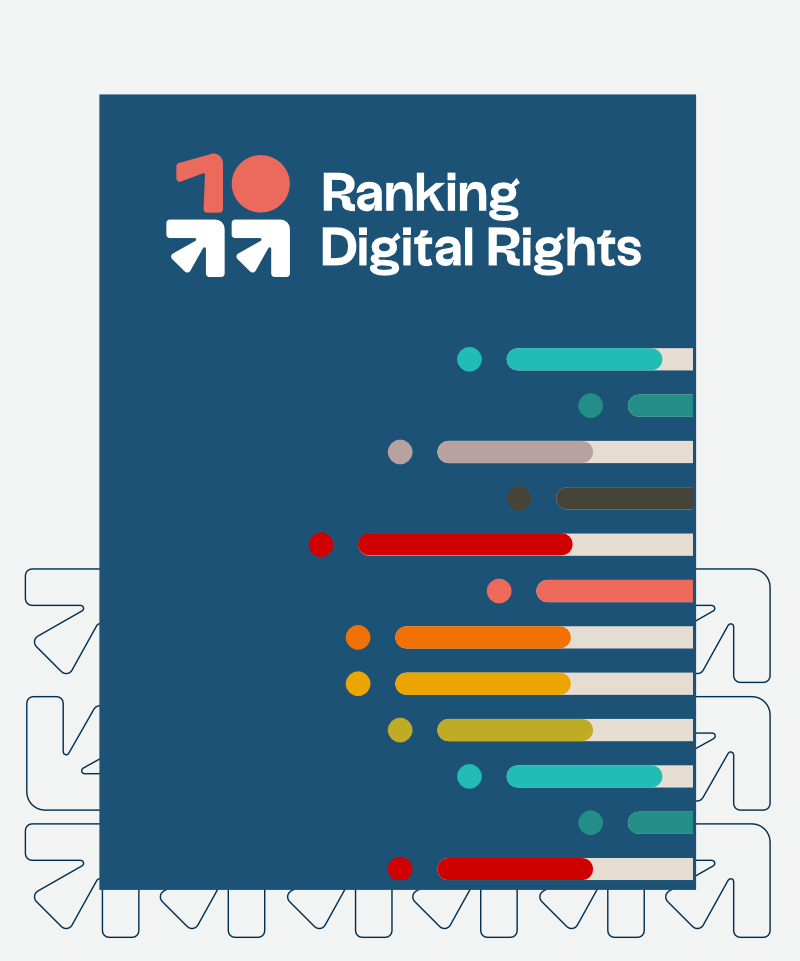Last month, AT&T announced that it may soon roll out a new, low-cost mobile internet plan subsidized by advertising. This came as no surprise to the RDR research team: We’ve been tracking telecommunications companies’ steady push into the mobile ad market for nearly two years.
In the 2020 RDR Index (due out in February 2021), we will rank telcos and digital platforms on a new set of indicators measuring corporate policies and practices around targeted ads.
This move by AT&T is part of an industry-wide trend by telcos to jump into the digital ad market that up to now has been dominated by digital platforms like Google and Facebook. All of the telecommunications companies we rank have ventured into the mobile ad market, tapping into the troves of data and insights they have on their customers in an effort to compete with digital platforms for a slice of the lucrative digital advertising pie.
While digital platforms have been in the much-deserved hot seat for building a business model that trades on user data for profit, telcos thus far have slid under the radar for cashing in on this very same model.
Telcos profit from this data in a variety of ways, only some of which are known to the public. We know that they serve ads to their subscribers via SMS networks, and that they sell user data to third-party ad companies that can influence what kinds of ads subscribers might see on other digital platforms or apps. And we suspect that AT&T’s proposed plan would compound this issue by effectively putting a price on privacy, leaving low-income consumers likely to opt for a mobile plan that subjects them to additional targeted advertising.
All told, we worry that the targeted advertising practices of telcos are no less harmful than those used by digital platforms like Google and Facebook.
For these and other reasons, our new research indicators on targeted advertising are industry-agnostic: We apply them to every company we rank that engages in or enables any type of targeting, and to every company that shares or sells user data and insights to third parties for any type of advertising or sponsored content.
Yet some of the telcos we rank have pushed back on our approach. When we’ve asked for their feedback on our preliminary research, some company representatives have argued that RDR should not evaluate telcos on our targeted advertising indicators—at least not in the same way as digital platforms. They say their SMS-based ad services are more limited in scale and fundamentally different in substance—and less risky, from a human rights perspective—than the kind of ad targeting that is happening on social media and other digital platforms.
The implication is that they are engaged in a more benign form of ad targeting that simply connects commercial retailers with potential customers through SMS-based ads that market footwear or face cream, for example. But they aren’t telling us precisely how ads are bought and sold, or how users’ data is changing hands along the way. We don’t know what we don’t know. But we do know the devil is often in the details.
We recognize that targeting a group of users who might be interested in buying new running shoes is not the same thing as targeting a segment of the population with political messages that could influence who people vote for. But the road from commercial advertising to political disinformation is pretty short: Just ask Facebook, which originally jumped into the online ad game to serve as a platform for retailers and is now one of the planet’s dominant vehicles for political messaging and targeting—with all the problems that this has brought. Indeed, for political campaigns, SMS messaging is gaining ground in the U.S., and has been a major force in other countries like India for the past few years.
Perhaps even more important is the fact that most telcos today are not simply offering SMS-based ads to commercial marketers. They are also selling or sharing user profiles and data with other parties. Data brokers, ad networks, and even political operatives then use that information to target specific individuals with personalized ads on other platforms and around the web. These practices could incur significant harms, putting users’ human rights at risk.
For all these reasons, we expect digital platforms and telcos alike to conduct human rights risk assessments on how their targeted advertising policies could harm the right to information, the right to privacy, and how they could be discriminatory—and to take steps to mitigate those harms. We expect companies to clearly disclose what types of ad targeting is not permitted—including listing restrictions against using certain audience categories, like race, gender, or political affiliation. We expect companies to offer users the ability to opt-in to whether they are targeted at all—targeting should be off by default—and we expect companies to give users the ability to control how their data is being used and shared with any third party that can exploit that information for targeting purposes.
When we pilot tested our indicators on targeted advertising last spring, we even found that telcos are far less transparent about these policies than digital platforms—and yet the human rights risks of their targeted advertising practices are equally grave. These initial findings affirmed our position that telcos need to be held to the same transparency and accountability standards about their targeted advertising policies and practices as digital platforms.





